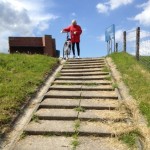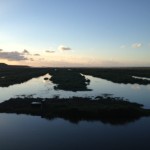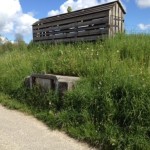The far Northwest of the Groningen province is a rather unknown part of the Netherlands. Reitdiep, originating in Groningen town, there ends in the former Lauwerszee, called Lauwersmeer from 1969 onwards, when the sea was dammed. The 1953 floodings in Zealand have left a deep impression, but the sea also raged at the Groningen coast. I stayed there for several days at the Louwes family estate. The present owner’s grandfather was a grandson to Derk Mansholt, who lived in the same row of estates of gentleman farmers, and who was also the grandfather to Sicco Mansholt, who was born at an estate called Torum. The latter, the ‘architect’ of the Eurpean agricultural policy, is the subject of this column.

Let us take a chronological view. It seems that from the Iron age onwards, people lived on these salt marshes. All Dutch pupils are told the line of Plinius the Younger, who wrote about the tribe in the far North, where there is ‘no difference between the sea and the land’. A tribe that lived in miserable conditions on mounds around which the sea washed twice a day. For centuries afterwards, people still lived on little islands surrounded by dikes, surrounded by salt marshes and silt. They recovered flatfish from the marshes as the sea retreated, and did not mind doing some piracy during the heyday of the Hanze merchants. The minute rural village of Vierhuizen is said to have been such a centre of privateers. Now the sea is far off, as the people in Groningen reclaimed much land on the sea and frantically constructed dikes around every bit of reclaimed land. The Westpolder, a fine and unknown part of the Netherlands. Reclaimed in 1875 by a number of farmers with a stake in the new land who paid for the works themselves.

Iron fist
So far, this story might show better in a tourist leaflet than on a website devoted to sustainability. The reason for telling the story on this site is that on this stretch of land in the far Northwest of Groningen province, the Mansholt family had been living for over a century. Sicco Mansholt was a rich gentleman farmer of socialist conviction, leaning towards Marxism. From 1945 onwards he was the Dutch minister of Agriculture and Food Supply, and 13 years later the first vice president to the European Commission. In that capacity, he was also responsible for the European agricultural master plan – and he left his marks in that area. We deal with them every day. The both socialist and capitalist ‘red’ Mansholt was the founder of the grand European Common Agricultural Policy, in need for revision now. Inspired by the idea ‘never again a hunger winter’ (such as had struck the Western part of the Netherlands in 1944-‘45), he started reforming Europe in order to prevent an economy with too many farmers that would be too poor.

Mansholt devoted himself to establishing constant wheat prices, constructed a system of tariff walls around Europe, and saw through his projects with an iron fist. The ‘King of Europe’, people called him, as he was the only person who succeeded in uniting Europe, around his agricultural policy. Being a major farmer himself, he wanted that farmers who would work and produce in the united Europe of the future, would be able to survive in their trade. He envisaged that in order to arrive at that goal, the farming population would have to be halved to five million. He was deeply convinced that agriculture is at the basis of prosperity in any society.
That thought of his, that agriculture should be the basis of prosperity, now returns in the idea of the biobased economy, albeit without the large-scale implications of Mansholt’s policy. We, the editors of this site, too, judge that prosperity will revolve around the use of the entire yield of agricultural products, and a much more small-scale and regionally centred rural organisation. For reasons of sustainability.

My grandmother, Alberdina Dop Van Veen, lived and worked at the estate late 1895-1910 and then immigrated to Chicago, Il, USA.